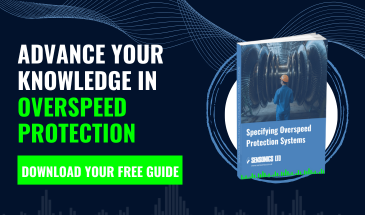Reducing Risks with Effective Monitoring
PRODUCT APPLICATION ARTICLE
1st July 2010
For Immediate Release
REDUCING RISK WITH EFFECTIVE ‘SIL’ VIBRATION MONITORING
Monitoring vibration on critical rotating plant can play a key role in meeting the protection requirements of the latest machinery directives, specifically (Directive 2006/42/EC) which came into force at the end of 2009. This directive demands that machine manufacturers and owners identify the hazards and risks their products present to users. Any risks identified must be reduced to as low a level as is reasonably practicable. The important considerations are; failure of rotating plant can not only be expensive in terms of repair cost and lost revenue through downtime, but also pose a significant health and safety risk.
For example, one of the challenges facing centrifuge designers and end users is to ensure appropriate safe operations over the life of the equipment. The operational mode of the centrifuge can have a large effect on wear and fatigue of the rotating elements, particularly considering this can involve up to 50,000 stop / start cycles per year. Not only do the hazards and risks associated with the operation of such equipment need to be understood in line with the directive, but an appropriate measurement and maintenance regime is required based on the operational scenario in order to maintain the system integrity and to reduce downtime. Vibration monitoring can play a key role in both the predictive maintenance and protection regimes. Ensuring advanced warning is provided of impending failure through the accurate monitoring of vibration levels and initiating safe machine shutdown under fault conditions that could present a health and safety risk.
When a protection function is required, the IEC61508 international standard for functional safety can be applied in conjunction with the requirements of the directive to ensure that sufficient integrity is designed in to the electrical / electronic systems employed for the safety function.
The methodology starts with targeting the appropriate Safety Integrity Level (SIL) required of the protection function to achieve the level of risk reduction needed in the process. Vibration measurement may only play a part in the overall requirement, but with a proposed protection system in place, a failure mode and effects analysis is carried out on the overall measurement control loop, from sensor to shutdown actuator. This determines not only the Mean Time between Failure (MTBF) of the protection equipment but also the diagnostic coverage and the safe failure fraction (SFF). The diagnostic coverage illustrates the percentage of failure modes of the equipment that are detectable from an operator perspective and the SFF determines the percentage of failures which result in a safe process condition. All these factors in combination with protection system channel redundancy are used to calculate the overall SIL level.
To help manufacturers and operators meet these latest protection requirements and to minimise the risks, condition monitoring specialists SENSONICS have developed proven and robust vibration protection systems for many industrial sectors. For example their DN2611 SIL (Safety Integrity Level) rated dual channel vibration monitor is ideal for machine casing and bearing vibration monitoring applications. Two levels of alarm permit one alarm to be used as an interlock during start up to prevent run up in the presence of excessive vibration, while the other can be utilised for shutdown in the event of failure during operation.
Current loop outputs for each channel are provided for interfacing with a PLC for the trending of vibration values and further alarm monitoring. The buffered signal output can be utilised for a more detailed spectral analysis of the vibration waveform to assist with failure mode detection. The transducer interface can be configured for operation with or without safety barriers.
In a simplex configuration the monitor used in conjunction with Sensonics PZS4 accelerometer is suitable for SIL 1 applications, while in a duplex configuration (2 parallel monitoring channels) protection can be provided at a SIL 2 level. Where the probability of failure to trip on demand for each configuration is designed to meet the SIL target, the resulting spurious trip performance is also excellent. This ensures a high integrity protection solution with minimal risk of downtime due to spurious events. ENDS.
Further details are available from: Jason Kingdom, Sensonics Ltd, Berkhamsted, Hertfordshire, UK.
Tel: +44 (0) 1442 876833. Fax: +44 (0) 1442 876477
Email: sales@sensonics.co.uk www.sensonics.co.uk
Product Application Article issued for Sensonics Ltd by:
Andrew Harvey – Harvey Communications
Tel: +44 (0) 1342 714447 Fax: +44 (0) 1342 713233
Email: admin@harveycomms.co.uk www.harveycomms.co.uk
SILprDN2611/0710.doc
